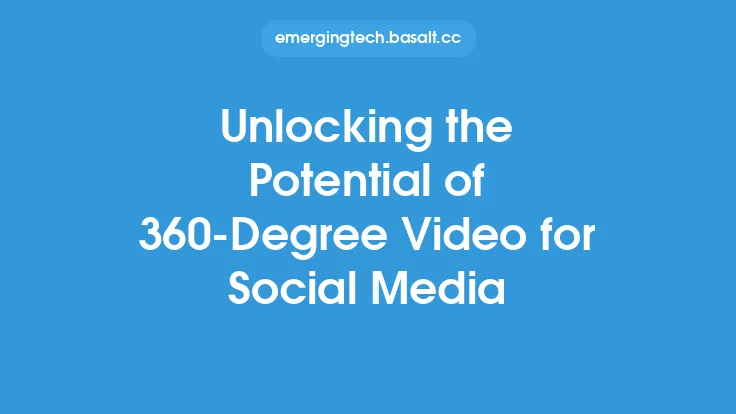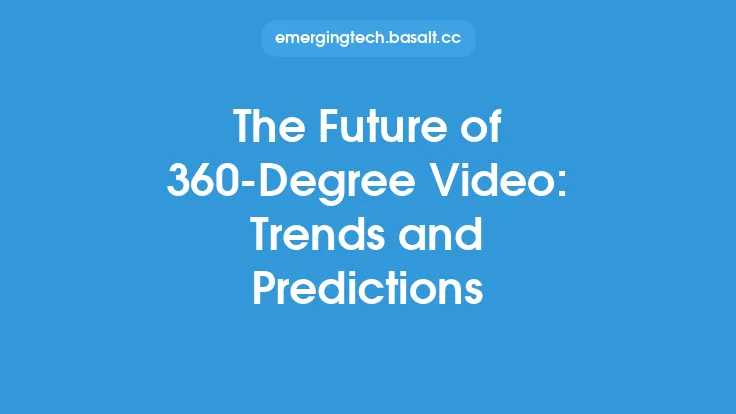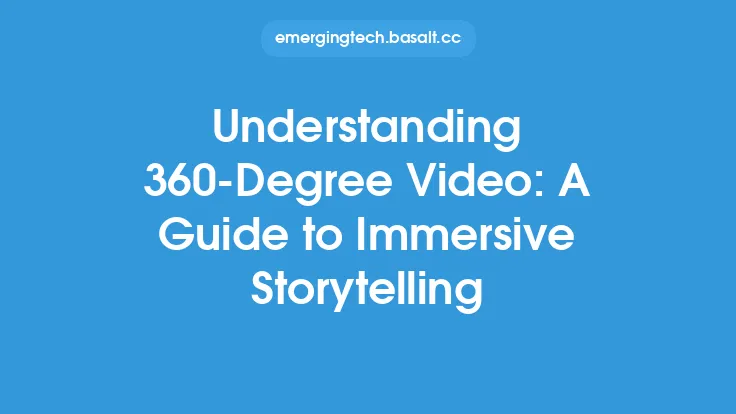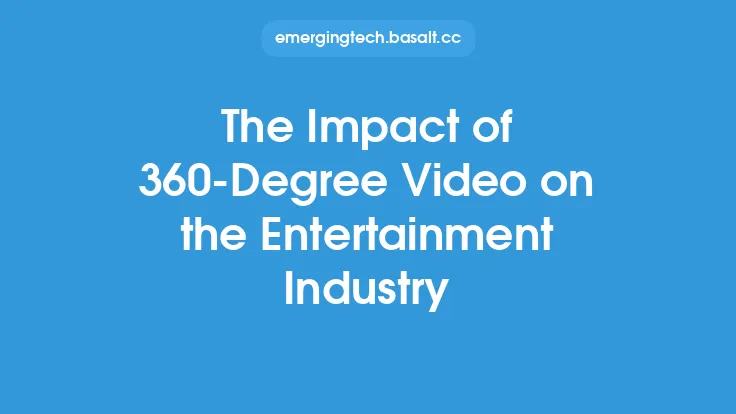The use of 360-degree video in marketing and advertising has become increasingly popular in recent years, and for good reason. This immersive technology allows consumers to engage with brands in a more interactive and memorable way, providing a unique experience that sets companies apart from their competitors. By leveraging 360-degree video, businesses can create engaging, interactive, and memorable experiences that capture the attention of their target audience and leave a lasting impression.
Introduction to 360-Degree Video Marketing
360-degree video marketing is a form of immersive storytelling that uses panoramic video to transport viewers into the heart of a brand's message. This technology allows consumers to explore a virtual environment in all directions, creating a sense of presence and engagement that is unparalleled in traditional video marketing. By using 360-degree video, companies can create immersive experiences that simulate real-world environments, products, or services, providing a unique and memorable way to connect with their target audience.
Benefits of 360-Degree Video in Marketing
The benefits of using 360-degree video in marketing are numerous. For one, it provides an immersive experience that captures the viewer's attention and engages them on a deeper level. This can lead to increased brand awareness, recall, and affinity, as well as a higher likelihood of conversion. Additionally, 360-degree video can be used to showcase products or services in a more interactive and engaging way, allowing consumers to explore and interact with them in a virtual environment. This can be particularly effective for companies with complex or technical products, as it provides a unique way to demonstrate their features and benefits.
Technical Requirements for 360-Degree Video
To create effective 360-degree video content, companies need to consider several technical requirements. For one, they need to invest in high-quality 360-degree cameras that can capture panoramic video with high resolution and frame rates. They also need to consider the stitching process, which involves combining multiple camera feeds into a single, seamless 360-degree video. Additionally, companies need to ensure that their 360-degree video content is optimized for playback on various devices and platforms, including desktop computers, mobile devices, and virtual reality headsets.
Best Practices for 360-Degree Video Marketing
To get the most out of 360-degree video marketing, companies should follow several best practices. For one, they should ensure that their 360-degree video content is high-quality, engaging, and relevant to their target audience. They should also consider the user experience, providing intuitive navigation and controls that allow viewers to explore and interact with the virtual environment. Additionally, companies should track the performance of their 360-degree video content, using metrics such as engagement, conversion, and return on investment to measure its effectiveness and identify areas for improvement.
Applications of 360-Degree Video in Marketing
The applications of 360-degree video in marketing are diverse and widespread. For example, companies can use 360-degree video to create immersive product demos, virtual tours, and interactive experiences that showcase their products or services. They can also use 360-degree video to create engaging social media content, such as 360-degree videos and photos that can be shared on platforms like Facebook and Instagram. Additionally, companies can use 360-degree video to create interactive advertising experiences, such as 360-degree video ads that allow viewers to explore and interact with virtual environments.
Measuring the Effectiveness of 360-Degree Video Marketing
To measure the effectiveness of 360-degree video marketing, companies can use a variety of metrics and analytics tools. For example, they can track engagement metrics such as views, clicks, and time spent watching 360-degree video content. They can also track conversion metrics such as sales, leads, and sign-ups, as well as return on investment (ROI) metrics that measure the revenue generated by 360-degree video marketing campaigns. Additionally, companies can use analytics tools such as Google Analytics and social media insights to track the performance of their 360-degree video content and identify areas for improvement.
Future of 360-Degree Video in Marketing
The future of 360-degree video in marketing is exciting and full of possibilities. As the technology continues to evolve and improve, we can expect to see even more innovative and immersive applications of 360-degree video in marketing and advertising. For example, companies may use 360-degree video to create interactive and immersive experiences that combine virtual and augmented reality technologies. They may also use 360-degree video to create personalized and dynamic content that is tailored to individual consumers and their preferences. As the use of 360-degree video in marketing continues to grow and evolve, we can expect to see even more innovative and effective applications of this technology in the years to come.





